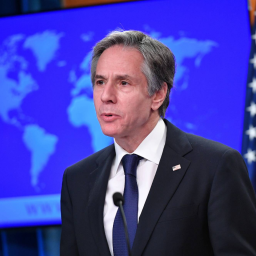Difference between Asia-Europe, Organization Structure and Management Operation



Hatice Cengiz, the fiancée of journalist and activist Jamal Khashoggi, who was barbarously murdered inside the Saudi Arabian consulate in Istanbul in 2018, has made a public plea to punish the Saudi Crown Prince, Mohamed bin Salman.

The robots donated to the Rwanda’s Health Ministry by the United Nations Development Programme (UNDP) and the Rwandan Ministry of ICT and innovation will be mainly used for temperature checks, monitor patient’s status and keep medical records of COVID-19 patients.

In a surprising turn of events, Aleksandar Vulin, the head of Serbia’s Intelligence and Security Agency (BIA), resigned on Friday after facing substantial international pressure.

The Argentine President, Alberto Fernandez, launched on Wednesday a parliamentary procedure to recall the Supreme Court

The International Institute for Finance (IIF), the world’s largest financial sector lobby group, recently reported an alarming surge in the degree of global indebtedness.

What are the practical necessities of the Global Security Initiative?

Bank of England forecast regarding economy to shrink by 14% this year, which was noted as the biggest fall in 300 years.

Halloween is an annual holiday celebrated on October 31, and Halloween 2022 will take place on Monday, October 31. The custom stems from the ancient Celtic holiday of Samhain, when people would light bonfires and dress up in costumes to fend off spirits.

As the island of Taiwan prepares for its presidential election, tensions between the United States and China are approaching a critical point.

Australian Prime Minister Anthony Albanese has publicly criticized the long-standing legal actions against WikiLeaks founder Julian Assange, stating on Thursday that the time has come for these proceedings to end.

Frank Vandenbroucke, Belgian Minister of Health sought to reassure the country about the AstraZeneca vaccine, following a decision to temporarily pause administering it to those aged 18 to 55.

Back in 2022, you couldn’t go through a news piece about the EU countries condemning Russia’s invasion of Ukraine

Chinese President Xi Jinping told his Russian counterpart Vladimir Putin on Friday that the road to peace negotiations regarding the war in Ukraine

On Monday, a historic change swept through the International Federation of Red Cross and Red Crescent Societies (IFRC) as Kate Forbes was elected President, the second woman ever to hold this prestigious position.

